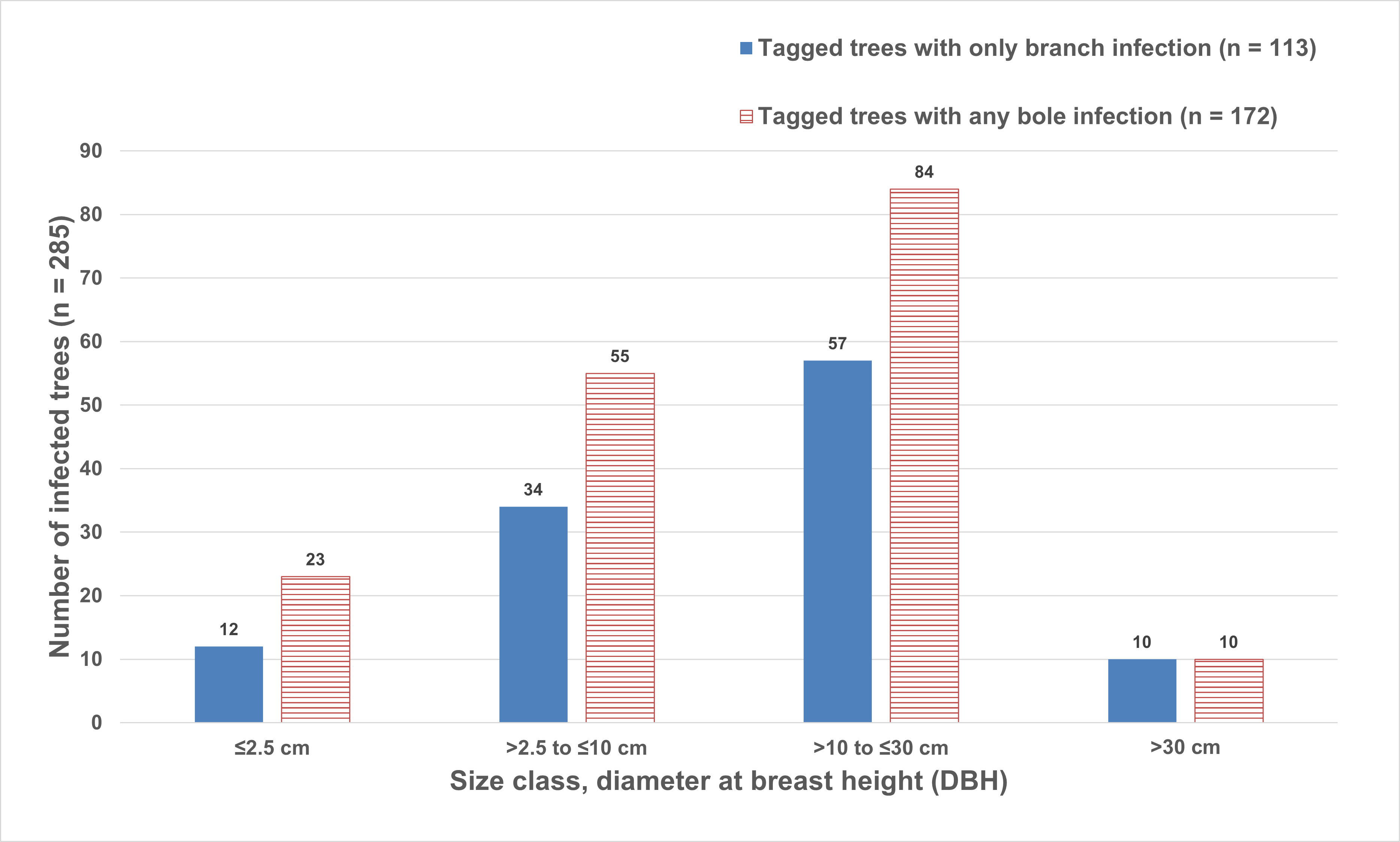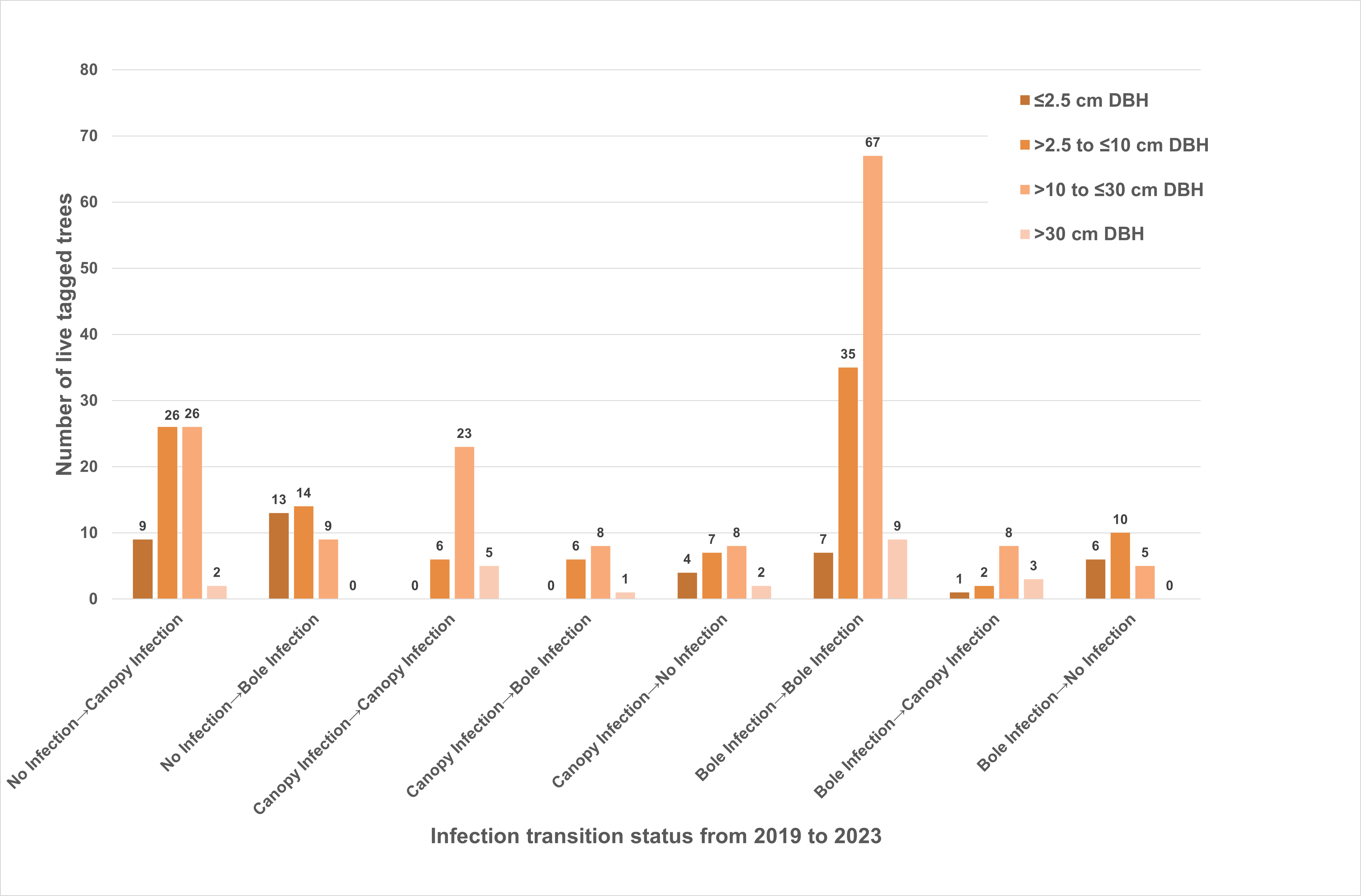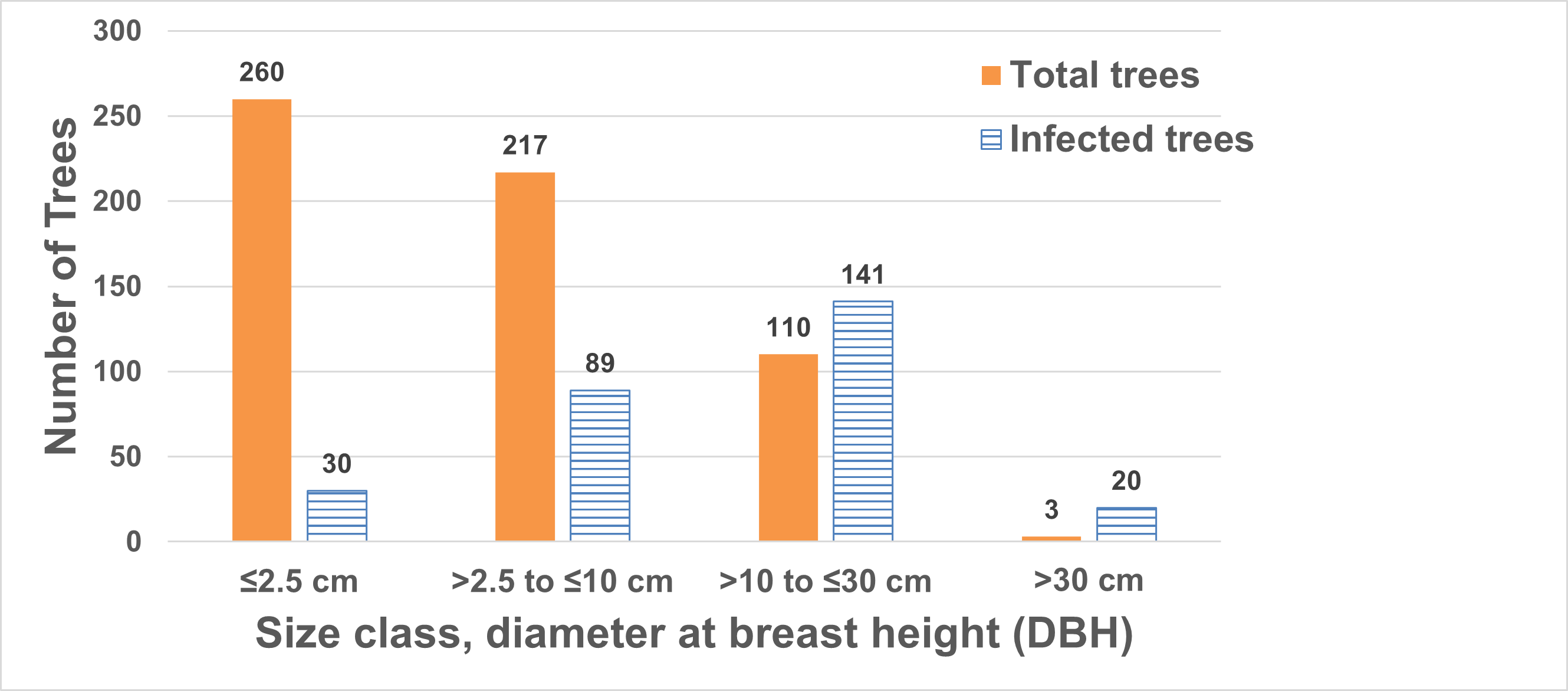Part of a series of articles titled Whitebark Pine Monitoring in the Greater Yellowstone Ecosystem.
Article
White Pine Blister Rust Infection in Whitebark Pine in the Greater Yellowstone Ecosystem – Data Summary of Monitoring in 2023

NPS
This is the second article in the article series, Whitebark Pine Monitoring in the Greater Yellowstone Ecosystem.
Articles 2 to 4 of this article series summarize data from Panel 4 transects surveyed between June and September 2023. This is the fourth revisit to these 44 transects for full survey data collection (see Figure 3 in Article 5—Methods—for the panel sampling revisit schedule).
This article presents results for Objectives 1 and 2 in the Interagency Whitebark Pine Monitoring Protocol for the Greater Yellowstone Ecosystem.
Objective 1 – Estimate the proportion of whitebark pine trees (Pinus albicaulis) more than 1.4 meters (>1.4 m) tall infected with white pine blister rust (Cronartium ribicola), and estimate the rate at which infection of trees is changing over time.
Objective 2 – Within infected transects, determine the relative severity of infection in whitebark pine trees >1.4 m tall (as indicated by aecia or canker location) and estimate the change in severity over time.
Overview of Methods
(For detailed methods, see Article 5 and the monitoring protocol.)
During a full survey visit, the presence or absence of white pine blister rust (blister rust) infection is recorded for all live trees within a 10 meter wide by 50 meter long (10 × 50 m) belt transect. A tree is considered infected if either aecia or cankers are present. To document the severity of infection, the location of blister rust canker is recorded as occurring in the canopy (branches) or on the bole (trunk) of an infected tree.
Note that data summaries from transects surveyed in any given year do not reflect the entire sample of transects; therefore, they do not represent the overall Greater Yellowstone Ecosystem population of whitebark pine and should not be used to draw wide-reaching conclusions about status or trends.
Results for Objective 1—White Pine Blister Rust Infection
A total of 1003 live tagged trees in 44 Panel 4 transects were examined for blister rust infection in 2023. Eighty-nine new live trees >1.4 m tall were added during the 2023 surveys. Four of the transects no longer have any live tagged trees >1.4 m tall, however, two of these transects have small trees (≤1.4 m tall) present. Of the 40 transects surveyed with live, tagged trees, 36 transects (90%) had trees infected with blister rust, while only four transects (10%) had no detectable blister rust present on any tagged trees.
Of the 1003 live observed trees, 285 (28%) had some level of blister rust infection. Infection was recorded on the bole for 172 (60%) tagged infected trees, while 113 (40%) had blister rust infection present in only the canopy (branches). Over half of the infected trees (161, 56%) were in the >10 to ≤30 cm DBH (diameter at breast height) category and an additional 89 trees (31%) were in the >2.5 to ≤10 cm DBH category (Figure 1).

NPS
Change of Infection Over Time: Status of Tagged Trees Live in 2019 and 2023
Of the 912 live trees that were surveyed on Panel 4 transects in 2019 and again in 2023, 590 (65%) had no evidence of blister rust infection, 181 (20%) were infected in both years, 99 (11%) transitioned from no evidence of infection to infected, and 42 (5%) went from infected to uninfected (Table 1). A transition from infected to uninfected could result from observer error, an earlier-documented infection based on indicators that upon resurvey no longer meet the established standards of three indicators in the same location, or infected branches that self-pruned.
| Infection Status | Number of Live Trees (n = 912) |
|---|---|
| Remained Uninfected | 590 (65%) |
| Remained Infected | 181 (20%) |
| Uninfected to Infected | 99 (11%) |
| Infected to Uninfected | 42 (5%) |

NPS/Shanahan
Results for Objective 2—Infection Location Transition
Of the 912 Panel 4 live trees that were surveyed in both 2019 and 2023, 280 trees (31%) were documented with blister rust infections, with 99 of these trees noted as newly infected (Figure 2). Of the 181 trees that were infected in 2019 and remained infected in 2023, 15 trees (8%) transitioned to a more severe state of infection on the bole of the tree by 2023. Conversely, 14 trees (8%) transitioned to a less severe infection state (bole infection to canopy only infection). Overall, blister rust infection is most common in the 10 to ≤30 cm DBH class, with 141 infected trees (50%) in this size class (Figure 3).

NPS

NPS

NPS/Shanahan
Learn More
This web article will be updated regularly with new results, but the 2023 results presented here are summarized in a resource brief for 2023. For more results from past years please visit the Greater Yellowstone Network website.
Last updated: August 21, 2024
